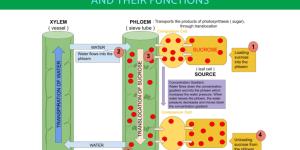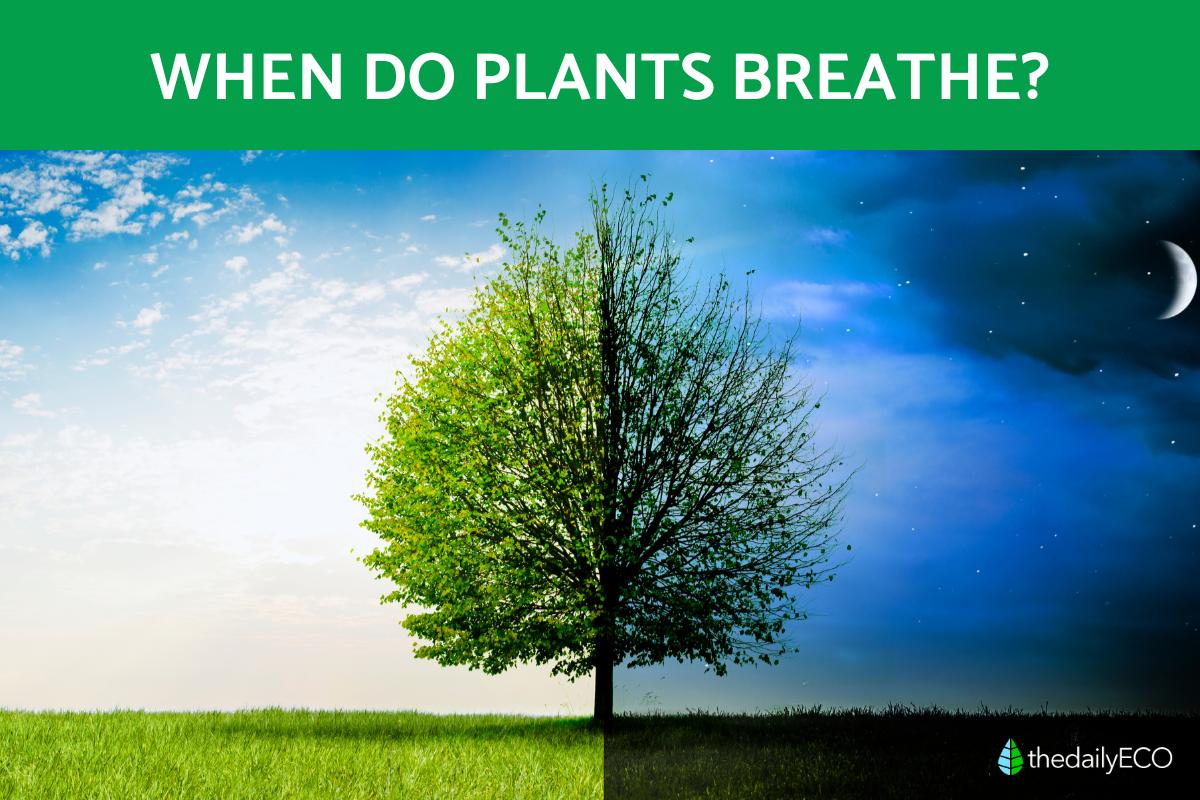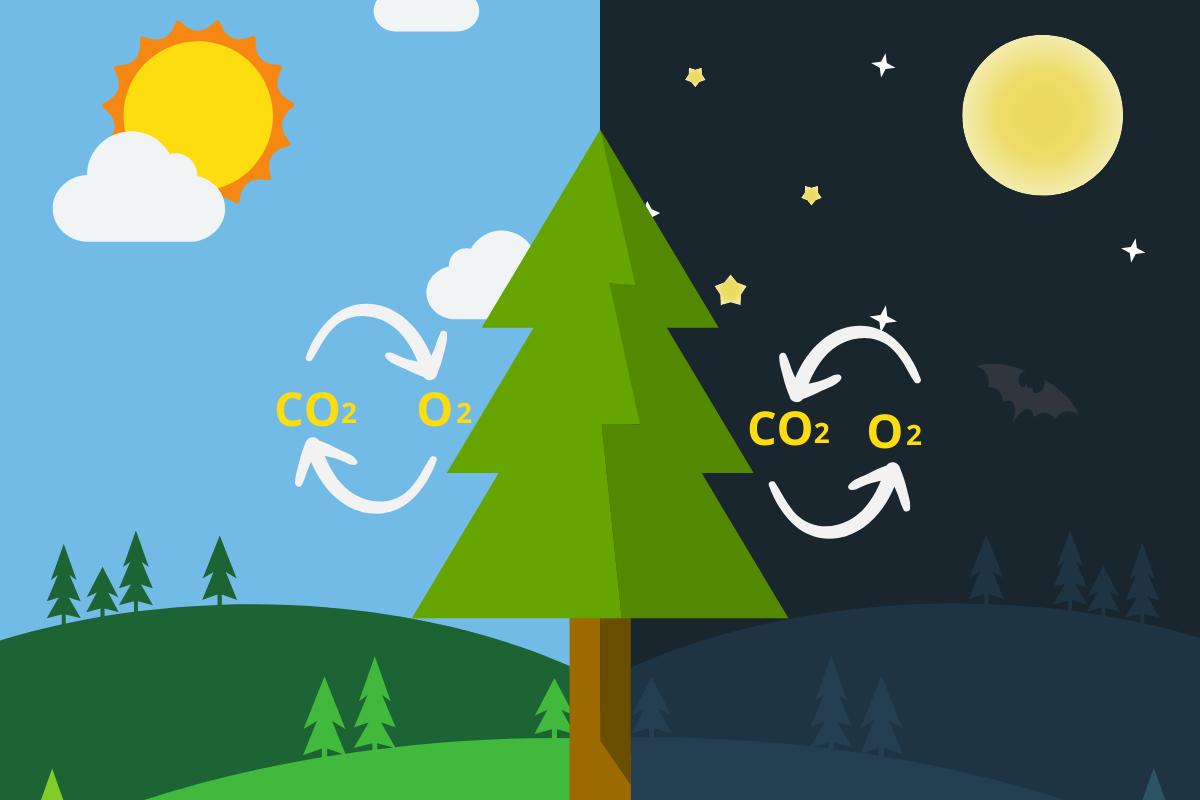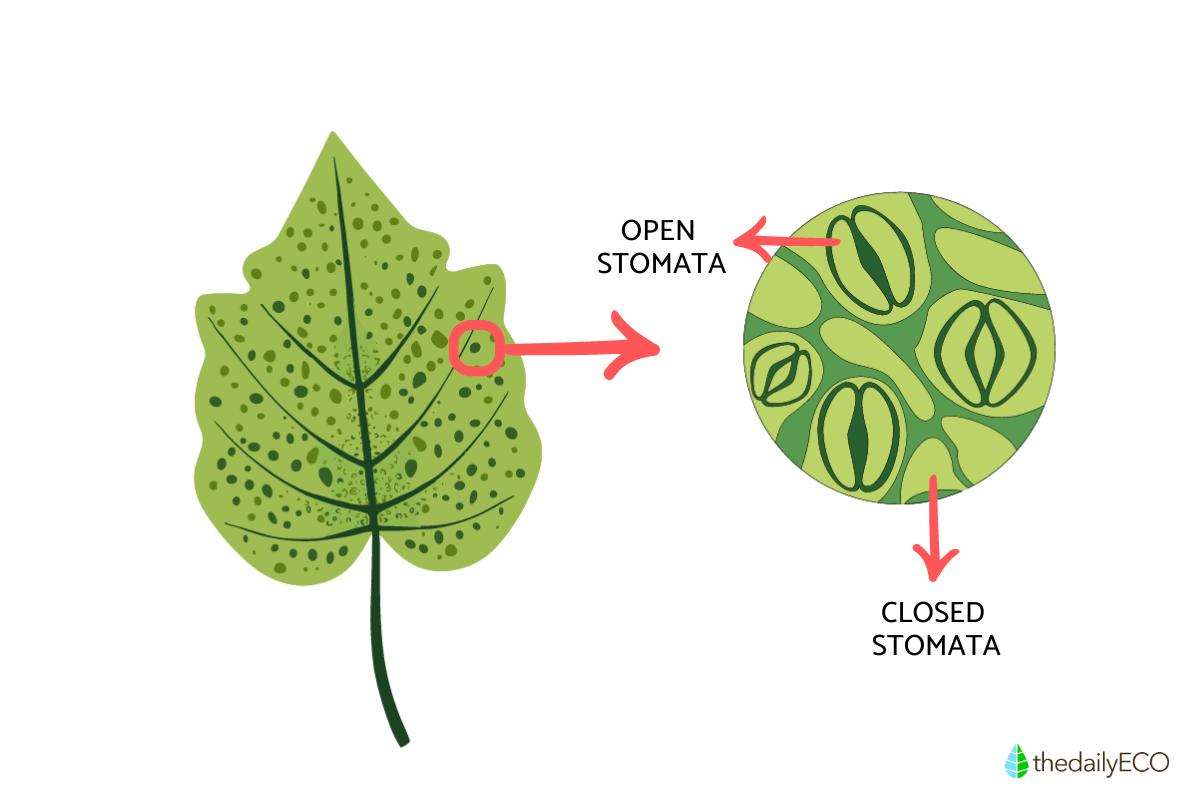When Do Plants Breathe?


Plants, like all living organisms, require a constant supply of energy to function. This energy comes from a cellular process called respiration. Unlike animals that breathe in oxygen through lungs, plants carry out respiration at the cellular level. This process fuels their growth, development, and all their essential functions.
In this article by thedailyECO, we explain when and how do plants breathe, and how it works differently from animal breathing. We'll explore how plants take in oxygen and release carbon dioxide, and how this process is intricately linked to photosynthesis.
How do plants breathe?
Plants don't breathe in the same way animals do with lungs. Instead, they exchange gases through tiny pores scattered across their leaves and green stems called stomata, which function like microscopic breathing holes.
Plant respiration, though unseen, is the engine that fuels their growth and survival. Let's delve deeper into the cellular mechanisms of this process and compare it with its counterpart, photosynthesis.
Respiration occurs at the cellular level, within specialized organelles called mitochondria. Often referred to as the "powerhouse of the cell," mitochondria are responsible for breaking down sugars (glucose) to produce the energy currency used by all living things: adenosine triphosphate (ATP).
Plants primarily use glucose obtained from two sources: sugars produced during photosynthesis or starches broken down from storage. Oxygen, taken in through stomata, acts as a key reactant in the breakdown process. The breakdown of glucose in the presence of oxygen releases usable energy in the form of ATP. This ATP fuels various cellular activities like nutrient uptake, protein synthesis, and growth. As waste products, carbon dioxide (CO₂) and water vapor are released from the mitochondria back into the cell and eventually exit through the stomata.
Think of a car engine, where glucose acts as the fuel, oxygen is the "combustion agent," and ATP is the energy that powers the car's functions. In this analogy, carbon dioxide and water vapor are the exhaust fumes released during the process.
Does respiration in plants take place in day or night?
Respiration in plants takes place both day and night. Plants, like all living things, need a constant supply of energy to function. This energy comes from an interplay between two key processes: respiration and photosynthesis. While both processes involve the exchange of gases, respiration and photosynthesis are distinct because respiration is primarily for energy production, whereas photosynthesis is for sugar production.
However, photosynthesis, the main source of the sugars used in respiration, only happens during daylight hours. These two processes work together in a cycle, but they operate on different timeframes.
Photosynthesis is the process where plants capture sunlight. Photosynthesis is another vital cellular process unique to plants. It utilizes sunlight as an energy source to convert carbon dioxide and water into carbohydrates (sugars) and oxygen. Unlike respiration, photosynthesis is dependent on sunlight and primarily occurs during the day. Chloroplasts, organelles containing pigments like chlorophyll, are responsible for capturing sunlight and driving the photosynthetic process. The sugars produced during photosynthesis serve as the primary fuel source for respiration.
While photosynthesis isn't creating new sugars during the night, plants can tap into their stored reserves like starches for energy production. Respiration breaks down these starches into glucose, which can then be used to fuel various functions. Even at night, some low-level metabolic activities continue. Respiration ensures these processes have the energy they need to function without disrupting the overall metabolic balance.
These two processes are intricately linked. Photosynthesis provides the sugars (glucose) that fuel respiration, while respiration releases the carbon dioxide needed for photosynthesis. They also involve the exchange of gases: plants release oxygen produced during photosynthesis, while they take in oxygen and release carbon dioxide during respiration.
Despite these opposing interactions, a balance is maintained, ensuring the continuous flow of energy and essential gases for plant survival.
Discover more about the process of photosynthesis, the sun-powered partner of respiration, in our next article.

Where do plants breathe?
As mentioned before, plants don't breathe in the same way animals do, but they do exchange gases with their environment through tiny pores called stomata.
These stomata are usually located on the underside of leaves and green stems. They open and close depending on various factors like light and moisture levels. Here's how gas exchange works:
- Respiration: plants take in oxygen (O₂) through open stomata for cellular respiration, releasing carbon dioxide (CO₂) as a byproduct.
- Photosynthesis: during the day, with sunlight available, plants absorb carbon dioxide (CO₂) through stomata for photosynthesis, releasing oxygen (O₂) back into the environment.
It's important to note that stomata also play a crucial role in water loss from plants. As they open to exchange gases, water vapor also escapes through these pores in a process known as transpiration. Plants carefully manage this trade-off, balancing the need for gas exchange with water conservation.
Therefore, plants "breathe" in the sense of exchanging gases, but they do so through these specialized structures called stomata, not through lungs or similar organs. Read on to discover the surprising ways these stomata regulate gas exchange and influence plant health in our next article.
How do plants breathe underwater?
Aquatic plants have evolved a variety of adaptations to efficiently exchange gases in their submerged environments. From specialized tissues like aerenchyma to modifications in leaf structure and gas diffusion mechanisms, these adaptations ensure that aquatic plants can perform respiration and photosynthesis effectively, allowing them to thrive in diverse and often challenging underwater habitats.

Do plant roots breathe?
While photosynthesis primarily occurs in leaves and green stems, respiration takes place in leaves, stems, and even roots. Roots perform many functions such as anchoring the plant, absorbing nutrients and water, and also respiration.
In roots, respiration does not occur through stomata but through lenticels. Lenticels are small, lens-shaped openings that allow gas exchange in roots and lignified stems, where they are located on the bark. Lenticels are also present in some fruits, such as apples and pears, and in tubers like potatoes. Unlike stomata, lenticels are larger and more prominent, making them easier to observe. They can have unique shapes that are sometimes used to identify different tree species.
Unlike stomata with their opening and closing mechanism, lenticels have a simpler structure with loosely arranged cells allowing for gas diffusion.
They play a critical role in ensuring that even parts of the plant not directly exposed to light can still perform essential respiratory functions, contributing to the overall health and functionality of the plant. However, it is important to note that gas exchange through lenticels is less regulated compared to stomata, allowing for a more continuous but slower exchange of gases.
We've explored how plants breathe, but where does the fuel come from? Dive deeper into the fascinating world of chloroplasts, the tiny factories that power plant growth, in our next article.
If you want to read similar articles to When Do Plants Breathe?, we recommend you visit our Facts about nature category.







